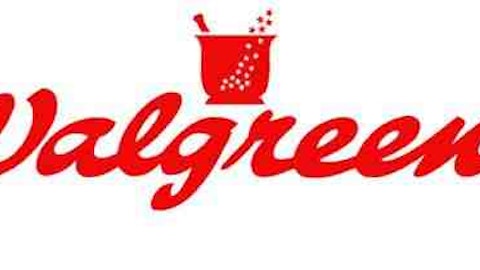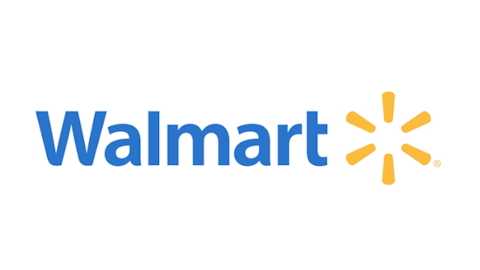The Kmart bankruptcy story provides a compelling example of how it is that even the most popular companies can fall apart in the cut-throat consumer retail market. Between its endless battle for value-focused customers with Wal-Mart Stores, Inc. (NYSE:WMT) and Target Corporation (NYSE:TGT), and internal struggle with in-store design, real estate locations, and technological shortcomings, Kmart shareholders were dragged into a financial black-hole by falling revenues and margins.
Today, a decade later, Kmart continues to operate within the Sears Holdings Corp (NASDAQ:SHLD), and is sheltered by the scaling benefits associated with conglomeration. In light of Kmart’s merger with Sears Holdings Corp (NASDAQ:SHLD) under such distressed terms, this article is going to take a look into the greater conglomerate’s financial position, and determine if it has managed to create an investment opportunity out of its acquisition.
Looking back at the Kmart bankruptcy, the biggest driver of the collapse was the company’s inability to remain competitive. This included an avoidance of technological investments that would improve operational efficiency, thus providing a greater inability to compete with companies like Wal-Mart Stores, Inc. (NYSE:WMT) on a price-point basis, both of which being epitomized by a comparatively high cost of capital. Given the extremely fixed nature of Sears Holdings Corp (NASDAQ:SHLD)’s business model, an investor can go on to evaluate how it is that the company’s cost of capital, sales per store operated (so as to include the impact of all of the company’s leases), and EBITDA/Assets (asset turnover) demonstrates Sears Holdings Corp (NASDAQ:SHLD)’s competitiveness after an entire decade of restructuring.
| Company (Ticker) | Long-term Cost of Capital | Sales/Operated Properties | EBITDA/Assets |
|---|---|---|---|
| Sears Holding (SHLD) | 7% | $15.64 | 2% |
| Wal-Mart (WMT) | 5.50% | $41.49 | 38% |
| Target (TGT) | 6.50% | $41.23 | 16% |
In reviewing the financial statements of Sears Holdings Corp (NASDAQ:SHLD) for trends of profitability and fundamental value, it is immediately apparent that the greater company’s continuing operations remain a struggle. The company maintains a CCC credit rating, granting them a 7% cost of capital, mainly due to its highly leveraged balance sheet. Given that the company then proceeds to hold off sheet operating lease arrangements with a third party holding company of a similar name, meaning that approximately $4 billion worth of assets and liabilities are hiding in the notes to the financial statements, the company shows a pretty nasty financial position in comparison to that of its competitors.
Despite these hidden asset exposures, which will need to be recognized when the USA adopts IFRS by the way, the company still demonstrates efficiency ratios that are less than half of those of its nearest competitors, while its adjusted asset turnover ratio is a meager 5% of that of Wal-Mart Stores, Inc. (NYSE:WMT)’s. These results are pretty self-explanatory, in that they show how it is that the company is still not effectively competing in the marketplace.
However, if an investor adjusts these metrics to include only those properties that the companies own, Wal-Mart and Target Corporation (NYSE:TGT) see very little change, while Sears Holdings Corp (NASDAQ:SHLD) sees an increase in store sales up to $55 million, as opposed to $15.6million. This means that the company is indeed still producing efficiency returns for its investors, but through the use of a comparatively dramatic amount of leasing leverage.
Given the comparatively ugly financial situation that a cursory view of Sears Holdings Corp (NASDAQ:SHLD) has demonstrated, an investor can take this analysis a step further to determine if there is perhaps a long-term opportunity associated with the management’s pursuit of something ‘foolish’. By looking at the long-term growth and investment projects that the management teams of these companies are taking on, an investor can determine if there exists some qualitative catalyst that can still drive SHLD into the markets as a serious competitor. The table below summarizes the big actions that managers for each of these companies are taking into the year to establish growth.
| Company (Ticker) | Catalyst Projects |
|---|---|
| Sears Holding (SHLD) |
|
| Wal-Mart (WMT) |
|
| Target (TGT) |
|
Notice how it is that Wal-Mart and Target Corporation (NYSE:TGT) are investing in the development of tangible investments that will either improve the ability of customers to make purchases, reduce costs, or expand revenues? This is dramatically different than Sears’ financially-focused divestment projects, and paltry investment into small-time products and novelty infrastructure. As such, it would seem as though Sears is not only remaining uncompetitive, but still in the process of undergoing a restructuring to clean up the mess that was created by the collapse of Kmart.
Ajay Goel has no position in any stocks mentioned. The Motley Fool has no position in any of the stocks mentioned. Ajay is a member of The Motley Fool Blog Network — entries represent the personal opinion of the blogger and are not formally edited.
The article Evaluating Kmart and Sears After a Decade of Restructuring originally appeared on Fool.com is written by Ajay Goel.
Copyright © 1995 – 2013 The Motley Fool, LLC. All rights reserved. The Motley Fool has a disclosure policy.






